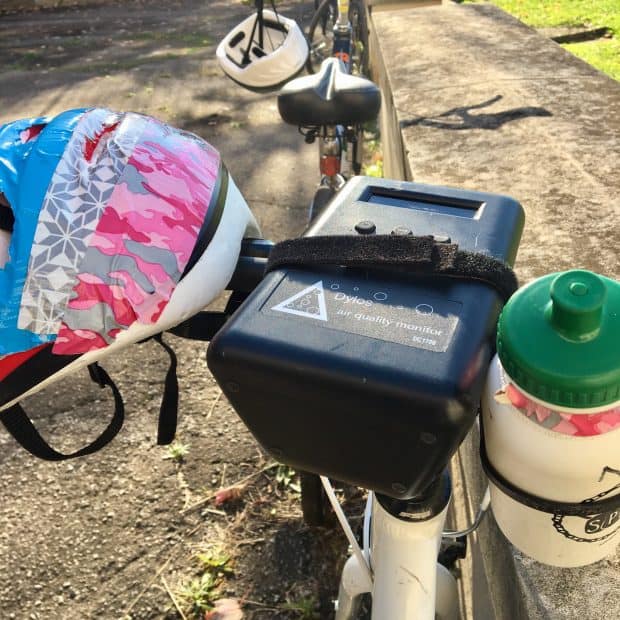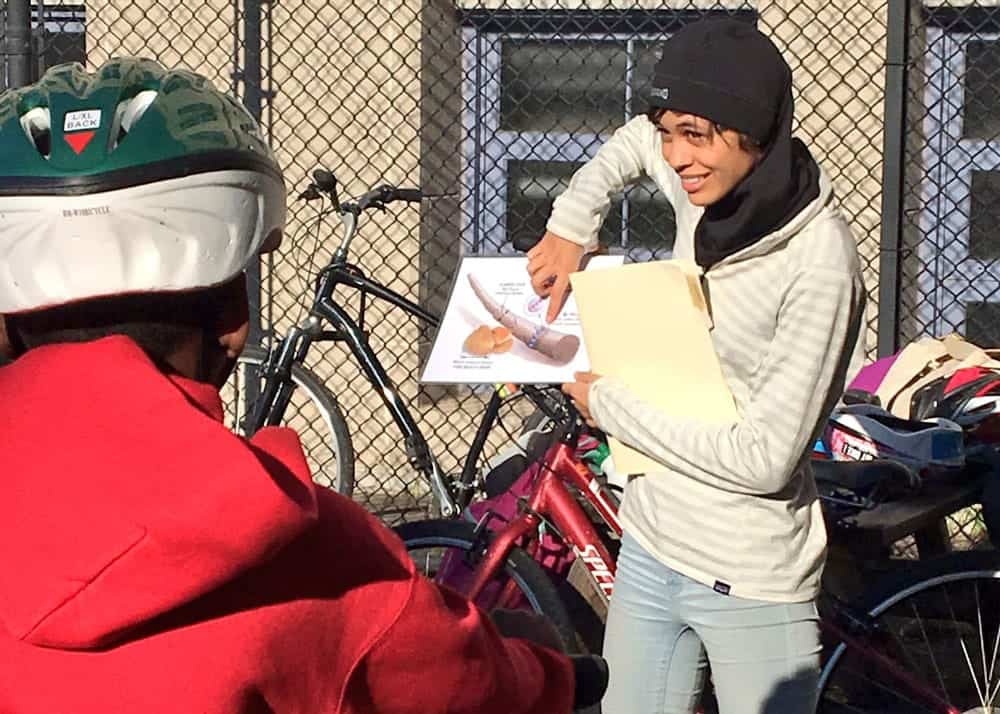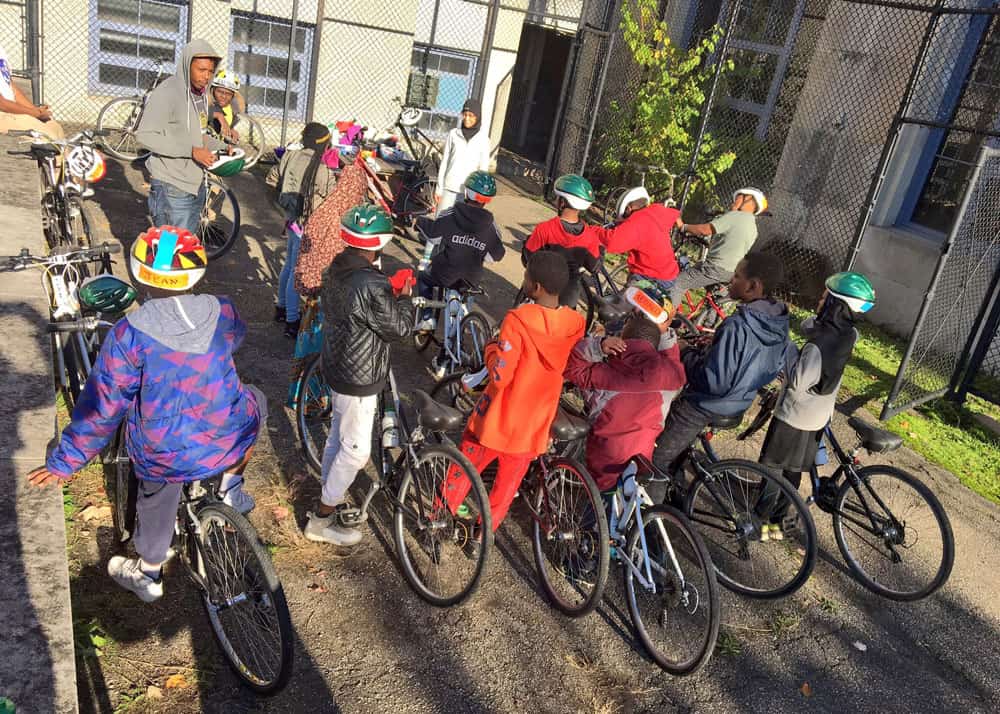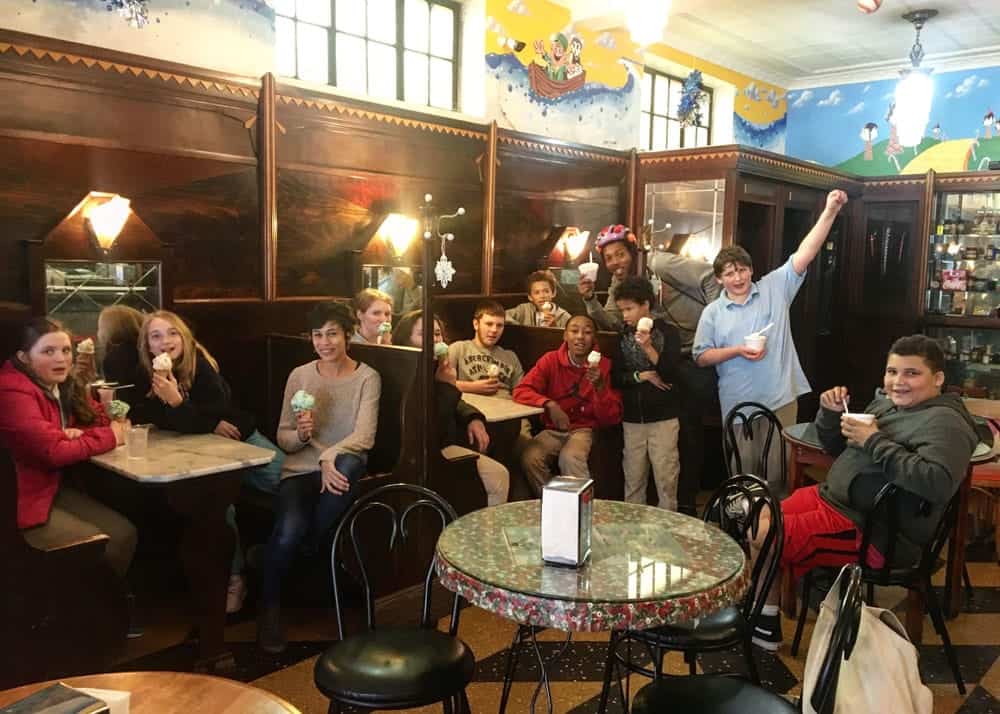Positive Spin Kids Test Air Quality
During BikePGH’s afterschool program, Positive Spin, middle schoolers learn how to maintain and ride a bicycle in the city. At the end of the program, students go on their longest bike ride of the season and then celebrate with a well-earned scoop of ice cream from a local Ice Cream Parlor.
This season, however, something was different. When the youth stepped outside to their bicycles, a couple of them found a black machine strapped to their handlebars, busy flashing green numbers on its small screen and sucking in air like a living thing.
 “What is that thing?,” asked a fellow Arsenal student. Veteran Positive Spinner, Brianna C., had been chosen to host a Dylos DC1100 on her bike.
“What is that thing?,” asked a fellow Arsenal student. Veteran Positive Spinner, Brianna C., had been chosen to host a Dylos DC1100 on her bike.

Introducing the Dylos DC1100
The Dylos measures particulate matter. Also known as soot, particulate matter are the tiny solid and liquid particles that float in our air. They’ve been known to deteriorate lung function, contribute to heart disease, and cause a host of other nasty ailments.
Brianna and 15 of her classmates were about to learn about air pollution from a local organization called the Group Against Smog and Pollution (GASP). Nine other children from Schiller STEAM 6-8 would get the same opportunity the following day.

So how bad is it?
“It’s bad,” said Kadin K., 7th grader at Schiller, nodding his head vigorously with eyes wide.
Kadin is right. It is bad. Allegheny County has the worst air quality east of California, and high particulate matter is a huge part of the equation. The green numbers flashed higher: 600, 1000, 2000….
Both schools have industrial neighbors. Arsenal Middle School is dwarfed by McConway & Torley, a major polluter which has been pumping out pollution since 1868—64 years before the middle school was even built. Across the river sits Schiller STEAM 6-8, a magnet school with an ominous view of the Heinz Canning Factory.
With such a close look at some of the city’s biggest polluters, what did these youth know about air pollution?
“Well, it used to be because of steel…” piped in one student, his classmates nodding in agreement. But what about today? To find out more, the kids buckled their helmets and got to riding.
Winding through a tunnel of trees on the Three Rivers Heritage trail alongside the Allegheny River, the students at Schiller were quick to forget about the air quality they were monitoring, but a roar from a pack of leaf blowers soon brought them back to the task at hand.
“WOW!!” shouted Kadin. “Look at this, look at this!” The green numbers were shooting up, higher, higher, higher. Dust swirled around us as the monitor read VERY POOR, the numbers no longer in the range of the scale on the back.

Improving Air Quality
Why is this important? Both kids and athletes are considered a sensitive population, at risk of increased exposure and harm to their still-developing lungs. They can reduce their exposure by limiting time outside during rush hour and playing in sheltered areas like parks.
The ultimate solution to reducing exposure, though, is improving our air quality, a task that takes a commitment from all of us. In the meantime, these 25 kids are thinking critically about what impacts the air we breathe. And then they enjoyed some ice cream.

